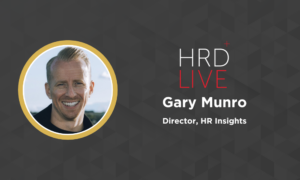How to get your employees engaged with their benefits – top tips for HR
- 5 Min Read
Good communication is seen as an effective way to help employees understand, appreciate and ultimately engage with benefit and wellbeing programmes – this isn’t as easy as it sounds, however. Legal & General share some top tips on how to get your employees engaged with their benefit and wellbeing programmes.
- Author: Legal & General | Sponsored
- Date published: Dec 7, 2021
- Categories

What does being ‘engaged’ mean anyway? The word appears everywhere these days. And in so many different contexts that the potential for confusion abounds. So, let’s focus on this question first before we get into the ‘how to’.
Employee engagement is the emotional commitment an employee has to the organisation and its goals. Author Kevin Cruse writes: “Engaged employees actually care about their work. They aren’t doing it because they have to, or just for the pay, or even just to get a promotion.” 1
It’s built on trust. And earning that trust involves doing what you say you’re going to do. So, when you say that your people are your greatest asset, evidence that to them in everyday working life. When it comes to wellbeing, and benefits as an integrated part of that, it’s about offering and communicating a programme (physical, emotional, financial and social) that genuinely supports their individual requirements; that equips them to confidently take control of their own, very personal, health and happiness needs.
Broadcast bombs
This won’t be achieved with a brochure, a set of Ts and Cs and a broadcast email to all.
Neither will it be achieved via push messaging from an app or benefits platform alone; even the personalised variety (just consider how many personalised push messages an individual is receiving via various apps at any one time).
Generic messages or over-reliance on digital only serve to achieve the opposite, namely disengagement due to overwhelming ‘noise’. In fact, research by Legal & General found that a key reason why employees don’t feel engaged with their group protection policies is that many feel besieged by the wider corporate noise.2
Technology is indeed a gamechanger, helping organisations reach remote workers over the last 18 months and beyond. Indeed, helping Legal & General launch a new generation, mobile-first platform for the delivery of group protection products; a first in its ability to provide equality and accessibility of benefits at no extra cost to the employer. Digital is where it’s at. There’s no doubt about that. But when it comes to communication, it should only be considered part of the picture. Organisations are cheating themselves out of an opportunity to make a difference if they only play in one lane.
Tailored trumps
A combination of all these communication channels – and more – is needed; consider town halls, appraisals, wellbeing champions, mental health first aiders, focus groups, total reward statements, benefits platforms, workplace social channels, good old-fashioned post, newsletters etc. But the important thing is, both the channel and message needs to be much more targeted to audience and everything needs to be aligned with company purpose.
This is what good communication is all about. And it’s good communication that will equip people to feel emotionally connected to their own wellbeing needs; to understand what they need and how to get there. In other words, to be engaged with benefits.
So, now to the ‘how to’. Here are our 5 top tips in a nutshell:
- Get to know your people. This is priority numero uno, but it’s so often missed; probably because HR simply don’t have the time or the resource. But how can you possibly hope to design a communication plan that connects if you don’t know where your people like to hang out (in terms of communication channel) and what they’re interested in (in terms of message). Speak to your group protection provider. They should be able to help here.
- Have a 12-month plan of action. From getting to know your people, via surveys, focus groups, appraisals, informal feedback etc – you can better design a year-round communication plan. Not just a plan to launch a benefit and then nothing. Also, use HR data to gain insights and build personalised communications. For example, if someone returns from maternity / paternity leave, they might be interested in increasing their cover.
- Make sure your benefits support equality and accessibility goals. There’s currently a trend towards fairness in terms of a base level of benefits for all. But this doesn’t necessarily meet individual needs. As in the above paternity / maternity example, allow people to dial up or down their cover levels according to need and at the touch of a button (or swipe of a screen), without having to jump through a load of administration and underwriting hoops.
- Integrate benefit and wellbeing programmes. All too often, benefit services and wellbeing initiatives sit apart in organisations. Considering wellbeing is now the primary driver for benefits – and that this hits the culture agenda, not to mention the business outcomes agenda – it’s vital to get some governance around this to ensure that it’s not just HR’s responsibility. All business departments and providers concerned have a role to play in ensuring employee outcomes. Again, communication can help make the collective purpose of wellbeing clear.
- Review, measure, tweak, review some more. Contrary to popular belief it is possible to measure the success of communication activity; from page views and open rates to surveys, focus groups…In fact, the bulk of the channels mentioned earlier. So, keep track of how the activity is landing. Find some willing individuals in various departments and simply pick up the phone and ask for their feedback on the messaging. Then tweak accordingly. And finally measure engagement, via an engagement survey, not a satisfaction survey. Satisfaction is not the same as engagement. Someone can be satisfied but only satisfied enough to be clock-watching 9-5 or until a recruiter offering a 5 percent bump in pay calls.
Find out more about how we’re getting more employees engaged with their benefits though Protect.








